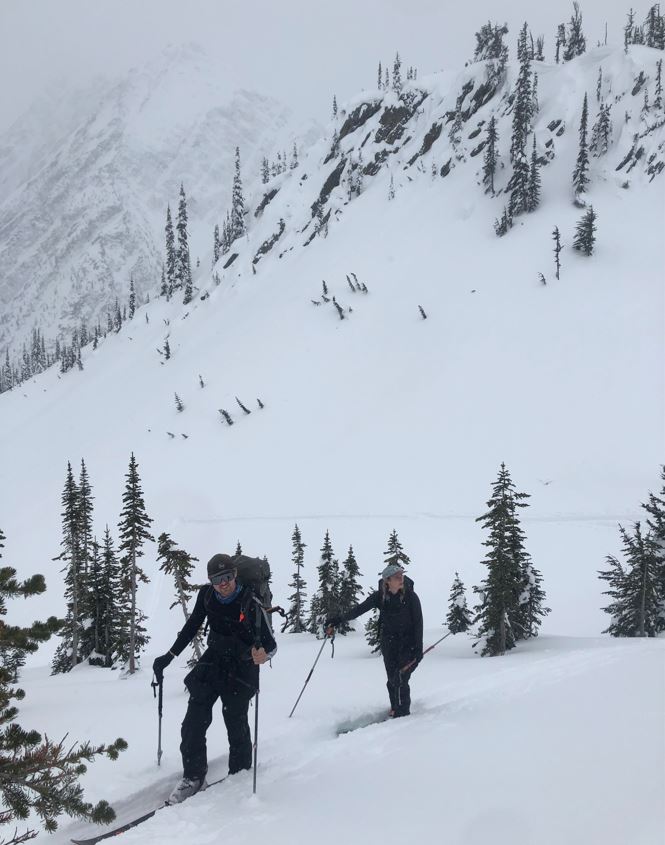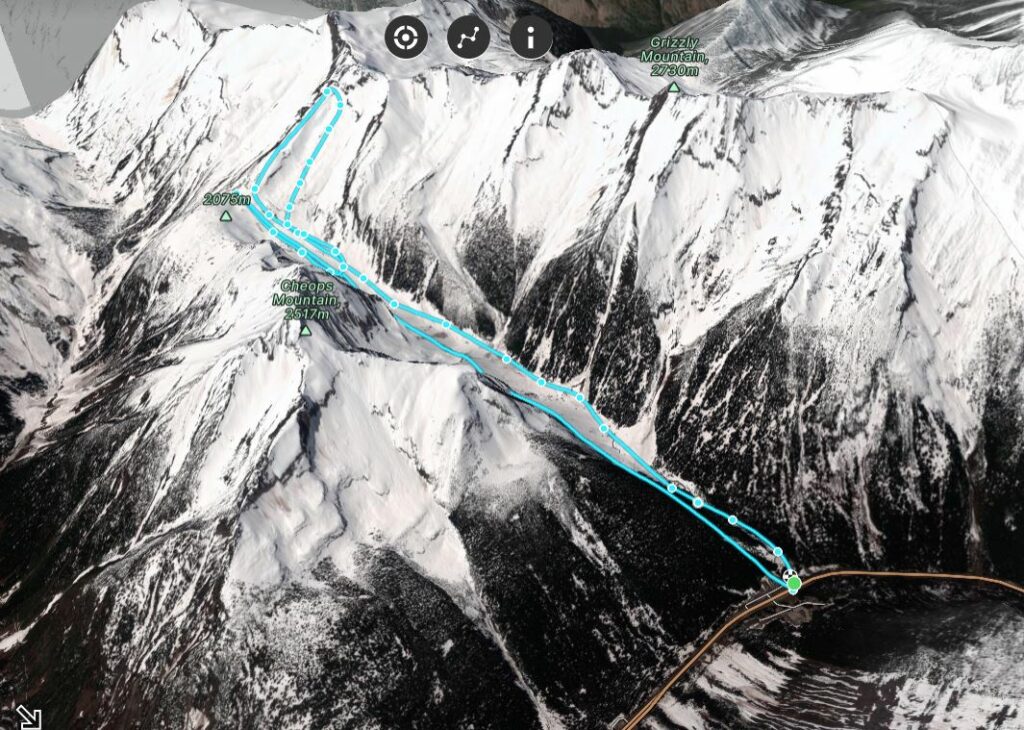We headed to Glacier National Park Pass National on the 27th of November to go the mountains in Rogers Pass.
Rogers Pass is the gap between Hermit and Sir Donald Mountain Range, it is famous ski touring area in British Columbia due too its easy access with the TransCanadian Highway. With a short approach, you get to ski a multitude of challenging terrain and test you ski mountaineering skills.
We left Kamloops at 6am, ideally we would have left Kamloops at 4am to get to parking lot at sunrise. Due to snow on the road, and hazardous road conditions which is to be expected for the highway past Revelstoke, we arrived at the Roger’s Pass Discoveries trail head at 9:45. We changed and got ready to hit the trail, making sure that we had all our gear in our bag.
Your ski bag should contain all this gear to be sure that you are ready for the mountain environment:
Avalanche Gear
Transceiver with spare Batteries
330cm probe
Collapsible shovel
Snow Study Kit
Notebook
Bonesaw
Ski Gear
Skis
Skins
Ski Poles with large basket
Helmet and tuque
Sun glasses or Ski Goggles
Gloves
Layering system ( Soft shell and Hard shell)
Extra and Navigation
Map/Compass
Charged phone with downloaded map
Your favorite Snack and lunch
1.5l of water/ person
Guide Tarp
Head lamp
1st Aid Kit.
Before leaving the car you should always make an avalanche transceiver check, insuring that every member of the party can be detected. We started skinning on the trail, at a starting elevation of 1300m to go ski Hospital Gully and Bowl at a high point of 2300m. Before going out in the backcountry it is important to have a plan and make sure that everyone in the group is on the same page. What are the hazards? What are the Objectives?

Objectives:
For this trip, the objectives was to have a easy going ski touring day, to familiarize with the mountain environment as it is early in the season. We were planning to have a short day of ski touring, ski easy terrain and not push ourselves too much since it was the firsts days of skiing this season. A member of our team just recovered from a meniscus injury, so we did not want to push her too much. We want to asses the terrain as well, and make a snow profile and test to understand what is going in the early season snowpack.
Hazards and avalanche danger.
The weather can change quickly in the mountain, since we expected snowfall in the afternoon we did not want to be stuck in a white out in the alpine. So as long as the visibility was good we knew we could continue skinning up and ski alpine terrain. The early season snow pack can be problematic as well, so before heading out we checked avalanche Canada for there avalanche forecast reports. The report was at 3/3/2 meaning that the avalanche danger is considerable in alpine and tree line, and moderate below tree line. With this in mind, we dug snow profile and made some compression test. Our result were CTE 5 down 25cm Non-Planar Break, and CTH 2 down 60cm RP on melting freeze crust, the snow depth was 250 cm at 2000m with 25 cm of new snow on top. Those test helped us understand what is going on the snowpack to give us an image on how it will react to us skiing on it. With that information, we decided to ski low angle terrain and no slopes over 30 degrees.

There was other skiers in the same area as us, making the uphill easy since the trail was already broken into. Once we decided to ski down the expected snow fall kicked in and the visibility was minimal, making the skiing dangerous until we reach the tree line were we could see up ahead and making it better skiing conditions. We decided to do a second run and skin up to the edge of the alpine to do another ski run in the trees. We then skinned back down to the car making the round trip a total of 1600m elevation gain, 13.2 km, and 6 hours from car to car. The adventure doesn’t end there, arguably the car ride back to Revelstoke was the most dangerous part of the day. With new snow on the road, traffic was slow and slippery, making the car ride back to Kamloops a 4hours trip.
With a party of 3 the trip total costs was 80$ of gasoline making it less than 30$each. Ideally if you are planning on ski touring in Glacier National Park, you should plan a two day trips to reduce the costs and travel times, but the conditions on the mountain the next day of our trip were to dangerous to go out.
Before going out in the mountains, always check the weather and avalanche forecast. Stay Safe!

